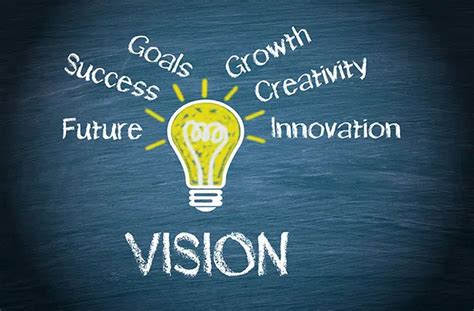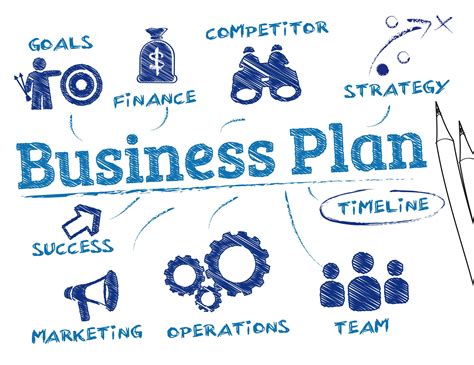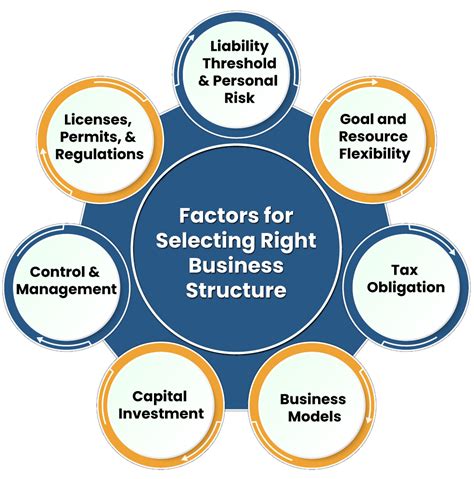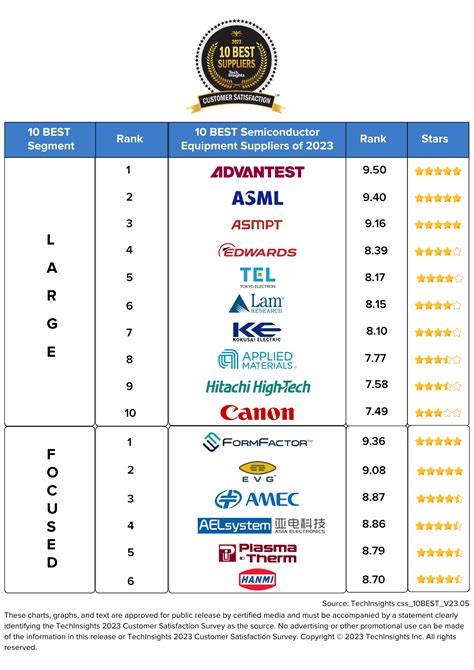Are you eager to embrace the exhilarating challenge of transforming your vision of owning a café into a tangible reality? This comprehensive guide serves as your compass as you navigate the intricate path towards establishing your dream cafe. By exploring each stage step-by-step, we provide you with valuable insights, practical advice, and strategies to ensure your success in the captivating world of hospitality.
Picturesque aromas, heartwarming ambience, and the joy of crafting delightful experiences for patrons await you on this remarkable journey. With passion as your compass and determination as your anchor, this guide will equip you with the indispensable knowledge and skills necessary to lay the foundation for your dream establishment.
From conceptualizing and refining your unique café identity to selecting the perfect location, procuring essential equipment, and crafting an irresistible menu, we leave no stone unturned. Our expert tips, insider insights, and practical recommendations will empower you to overcome potential hurdles and make informed decisions allowing your café to thrive in a competitive market.
Define your vision and concept

The first step towards turning your aspiration of opening a café into a reality is to clearly define your vision and concept.
Begin by envisioning what you want your café to embody and represent. Consider the atmosphere, the decor, and the overall experience you want your customers to have. Is it a cozy and intimate space or a vibrant and lively hangout spot? Clearly identify the ambiance that will resonate with your target audience.
Next, delve into the concept of your café. Think about the type of food and beverages you want to serve. Will it be a specialty coffee shop, a bakery, or a brunch spot? Define the menu offerings and decide whether you want to focus on a specific cuisine, dietary requirements, or a fusion of flavors.
As you define your vision and concept, it's essential to consider what sets your café apart from others. Emphasize the unique features, qualities, or experiences that will attract customers and make them want to visit your establishment. This could be your commitment to sustainability, a focus on local produce, or a creative twist in your menu offerings.
Lastly, remember that your vision and concept should align with your skills, interests, and passions. A genuine passion for the type of café you want to create will help drive your motivation and dedication towards making it a success.
Conducting Market Research
One essential step in realizing your aspiration of starting a café is conducting thorough market research. This phase involves gathering valuable insights and information about the target market, potential competitors, and customer preferences without delving into specific definitions. By conducting meticulous research, you can gain crucial knowledge that will help you make informed decisions and develop effective strategies for the success of your café venture.
Market research entails various methods to collect and analyze relevant data related to the café industry. One effective approach is to conduct surveys, either online or in-person, to gather feedback from potential customers. By understanding their preferences, expectations, and needs, you can tailor your café offerings to meet their demands and enhance customer satisfaction.
In addition to surveys, analyzing market trends and competitor analysis can provide valuable insights into the café landscape. Study the current market conditions, such as the popularity of particular types of cafés, emerging coffee trends, and customer preferences in terms of ambiance and menu options. By studying your competitors, you can identify their strengths and weaknesses, which can help you position your café uniquely and offer a distinctive value proposition to attract a loyal customer base.
Furthermore, another crucial aspect of market research is determining the target demographic for your café. Identify and analyze the characteristics, interests, and demographics of your potential customers, such as age groups, income levels, and lifestyle preferences. This knowledge will allow you to create targeted marketing campaigns and tailor your café's atmosphere, menu, and branding to appeal to your specific target audience.
| Key Points to Consider: |
| - Conduct surveys to gather customer feedback and understand their preferences. |
| - Analyze market trends and competitor strategies to identify unique selling points for your café. |
| - Determine your target demographic to develop tailored marketing campaigns and offerings. |
Create a Business Plan

Developing a comprehensive and well-thought-out business plan is crucial to successfully setting up your own cafe. This section will guide you through the process of creating a strong foundation for your dream venture, outlining key factors and considerations that will determine the long-term viability and profitability of your cafe.
1. Define Your Vision:
Start by clearly articulating your unique vision for the cafe. Consider what sets you apart from existing cafes and how you aim to attract and retain customers. Define the atmosphere, theme, and ambiance that you envision for your cafe, as well as any specific goals or values that will be central to your operations.
2. Conduct Market Research:
Thoroughly analyze the local market to understand the demand, competition, and potential target audience for your cafe. Identify your target demographic, their preferences, and the specific needs your cafe will fulfill. Utilize both primary and secondary research methods to gather insights and make informed decisions about location, menu, pricing, and marketing strategies.
3. Determine Your Financials:
Calculate the financial aspects of your cafe, including startup costs, ongoing expenses, and projected revenue. Develop a detailed budget that covers all necessary equipment, licenses, permits, furniture, staff salaries, and marketing expenses. Secure funding sources, such as personal savings, loans, or potential investors, and plan for potential financial challenges or contingencies.
4. Craft a Menu and Sourcing Strategy:
Create a unique and enticing menu that aligns with your target audience's preferences and fits within your budget constraints. Consider incorporating local or sustainable ingredients for added appeal. Research and establish relationships with suppliers to ensure high-quality ingredients and consistent delivery, while maintaining cost-efficiency.
5. Develop Marketing and Promotion Strategies:
Create a comprehensive marketing plan to effectively promote your cafe and attract customers. Utilize various channels such as social media, online advertising, partnerships with local businesses, and traditional marketing methods like flyers or local events. Implement loyalty programs or special offers to cultivate a strong customer base and encourage repeat visits.
6. Establish Operational Procedures:
Outline the day-to-day operations of your cafe, including opening and closing hours, staffing requirements, training protocols, and customer service standards. Develop efficient workflows, create employee schedules, and implement systems for inventory management, order tracking, and financial reporting. Ensure compliance with health and safety regulations.
7. Evaluate and Adapt:
Regularly review and assess the performance of your cafe against key performance indicators (KPIs). Identify areas that require improvement or adjustments and be prepared to adapt your business plan accordingly. Stay informed about industry trends and customer preferences to continuously innovate and stay competitive in the market.
By following these essential steps and crafting a well-researched business plan, you will be equipped with the necessary roadmap to turn your dream of opening a successful cafe into a reality.
Securing Financing
One of the crucial steps in turning your cafe dream into a reality is securing the necessary financing. Obtaining the funds needed to start and sustain your cafe requires careful planning and research.
- Evaluate your financial requirements: Begin by calculating the total amount of capital you will need to start your cafe. Consider various expenses such as lease or mortgage payments, equipment costs, interior design, inventory, licenses, permits, marketing, and working capital.
- Explore funding options: There are various avenues you can explore to secure financing for your cafe. Some common options include traditional bank loans, Small Business Administration (SBA) loans, grants, crowdfunding, and even personal savings or investments.
- Prepare a comprehensive business plan: A well-prepared business plan is crucial when seeking financing. It should include a detailed overview of your cafe concept, market analysis, competitive analysis, marketing and sales strategies, and financial projections. This will help potential lenders or investors understand the viability and profitability of your cafe.
- Approach lenders or investors: Once you have a solid business plan in place, you can start reaching out to potential lenders or investors. Research different financing institutions or individuals who specialize in small business loans or hospitality investments. Build relationships and present your business plan confidently and transparently.
- Consider additional funding sources: In addition to traditional financing options, there may be additional funding sources available for your cafe. Look into government programs, economic development grants, local business development organizations, or partnerships with suppliers who might provide financing or favorable terms.
- Manage your finances effectively: Once you secure funding, it's crucial to manage your finances effectively. Establish a clear budget and track all expenses and revenues. Regularly review financial statements to ensure your cafe remains on track and make necessary adjustments to maintain profitability.
Securing financing for your cafe can be a complex and time-consuming process, but with careful planning and perseverance, you can make your dream of owning a successful cafe a reality.
Selecting an Appropriate Location

When embarking on the journey of turning your aspiring cafe into a reality, one of the most crucial decisions you will need to make is finding a suitable location. The success and viability of your cafe heavily depend on its physical location, making it essential to carefully consider various factors in order to make an informed choice.
Identify Your Target Audience: Understanding your target market and the demographics of your potential customers is paramount in selecting the right location for your cafe. Consider factors like the age group, income level, and lifestyle preferences of your target audience. This knowledge will help you identify areas where your cafe can thrive and cater to the specific needs and desires of your customers.
Evaluate Foot Traffic: The number of people passing by a particular location, also known as foot traffic, can significantly impact the potential success of your cafe. Look for areas with high foot traffic, such as busy streets, shopping centers, or near popular attractions. A steady stream of passersby can provide your cafe with a constant flow of potential customers and increase its visibility in the community.
Consider Accessibility: Easy accessibility is vital to attract customers to your cafe. Choose a location that is easily reachable by public transportation, has ample parking space, or is conveniently situated in a central location. Ensuring that your cafe is easily accessible will encourage people to visit and create a positive impression, ultimately contributing to the growth of your business.
Scope Out the Competition: Researching the competition in the area you are considering is fundamental to gauge the market saturation and identify any gaps that you can fill with your cafe. Analyze the existing cafes or similar businesses nearby, assess their strengths and weaknesses, and determine how you can differentiate your cafe to stand out from the crowd.
Consider the Surrounding Environment: The overall atmosphere and ambiance of the area surrounding your potential location can greatly influence the success of your cafe. Seek areas with a vibrant and inviting atmosphere, such as neighborhoods with a significant number of cafes, restaurants, or cultural hotspots. Choosing a location that aligns with the atmosphere you want to create in your cafe can attract the right clientele and enhance the overall experience for your customers.
Think Long-Term: When selecting a location for your cafe, it is vital to think long-term and consider the potential for growth and expansion. Look for areas with future development plans, upcoming infrastructure improvements, or emerging trends that may attract more customers in the years to come. This forward-thinking approach can help secure the long-term success of your cafe and ensure its continued growth and profitability.
By carefully considering these factors and conducting thorough research, you can make an informed decision when selecting a suitable location for your dream cafe. Remember, a well-chosen location can be the foundation for your cafe's success and future growth.
Designing the Layout and Ambiance of Your Cafe
Creating a unique atmosphere plays a crucial role in the success of a cafe. The careful design and arrangement of furniture, lighting, decor, and overall ambiance can significantly impact the overall customer experience. This section explores the key factors to consider when designing your cafe's layout and ambiance, ensuring it aligns with your vision and attracts your target audience.
1. Space Utilization: The efficient utilization of space is essential for a cafe's success. Consider the size and shape of your venue, and identify the various areas that need to be incorporated, such as the dining area, counter, kitchen, restroom, and storage. Optimize the placement of tables, seating arrangements, and service areas to ensure a smooth flow for both customers and staff.
2. Furniture and Seating: Choose furniture that not only fits the overall theme of your cafe but also provides comfort and functionality to your customers. Consider a mix of seating options, including tables for groups, cozy booths for intimate conversations, and comfortable lounge areas for relaxation. Incorporate elements like plush cushions, ergonomic chairs, and versatile seating arrangements to accommodate the diverse needs of your customers.
3. Lighting: Lighting sets the mood and ambiance of your cafe. Utilize a combination of natural light and suitable artificial lighting to create the desired atmosphere. Consider installing large windows to let in ample sunlight during the day and utilize warm, dimmed lighting in the evenings to create a cozy and inviting ambiance. Ensure adequate lighting in each area, including task lighting for the counter and ambient lighting for the dining area.
4. Color Scheme: The choice of colors can greatly influence the overall vibe and perceived personality of your cafe. Select a color scheme that complements your brand and the theme of your cafe. Earthy tones like warm browns and deep greens can create a rustic and cozy feel, while vibrant colors like blues and yellows can evoke a lively and energetic ambiance. Use colors strategically on walls, furniture, and decor to enhance the desired atmosphere.
5. Decor and Theme: Infuse your cafe with a unique personality by carefully choosing decor elements and a theme. Consider the target audience and the atmosphere you want to create, whether it's a rustic farmhouse vibe, a modern industrial look, or a cozy vintage feel. Incorporate art, plants, wall hangings, and other decorative items that align with your chosen theme, adding charm and visual interest to your cafe.
6. Music and Sound: Background music and overall sound levels greatly impact the ambiance of your cafe. Choose a music genre that resonates with your target audience and complements the desired atmosphere. Pay attention to the volume, ensuring it's low enough to facilitate conversations but not overpowering. Consider incorporating sound-absorbing materials like carpets, curtains, and acoustic panels to minimize noise distractions.
7. Accessibility and Comfort: Ensure that your cafe is accessible and comfortable for all customers. Consider providing ample space between tables for ease of movement, wheelchair accessibility, and comfortable seating for various body types. Pay attention to temperature control, ventilation, and noise levels, ensuring a comfortable environment even during peak hours.
By carefully considering these factors and incorporating your unique vision, you can design a cafe layout and ambiance that not only attracts customers but also provides a memorable and enjoyable experience, setting your cafe apart from the rest.
Source equipment and suppliers

In this section, we will discuss the process of finding and acquiring the necessary equipment and suppliers for your cafe. It is crucial to carefully select reliable suppliers and high-quality equipment to ensure the smooth operation and success of your cafe.
One of the first steps is to create a detailed list of the equipment you will need to run your cafe efficiently. This may include items such as coffee machines, grinders, refrigerators, ovens, and seating furniture. Conduct thorough research to identify reputable suppliers who offer the equipment you require.
Once you have identified potential suppliers, it is important to assess their reputation, reliability, and pricing. Look for customer reviews and ratings to get an idea of their past performance and customer satisfaction. Compare prices from different suppliers to find the most competitive and cost-effective options.
In addition to equipment suppliers, you will also need to source various other items for your cafe, such as coffee beans, tea leaves, dairy products, and baked goods. Consider partnering with local producers or wholesalers who can provide high-quality ingredients at a reasonable price. Building strong relationships with suppliers can often lead to better deals and long-term partnerships.
| Key Considerations when sourcing equipment and suppliers: |
|---|
| 1. Quality: Ensure that the equipment and supplies meet high standards to deliver a superior customer experience. |
| 2. Reliability: Choose suppliers who can consistently deliver on time and meet your cafe's demands. |
| 3. Pricing: Find suppliers who offer competitive prices without compromising on quality. |
| 4. Support: Determine whether suppliers provide efficient customer support and after-sales service. |
| 5. Sustainability: Consider environmentally friendly options and suppliers who prioritize sustainable practices. |
Once you have established relationships with your chosen suppliers, it is important to maintain regular communication and review your agreements periodically. This will help to ensure that your cafe always has access to the necessary equipment and supplies, allowing you to focus on providing a memorable experience for your customers.
Hire and Train Staff
In this section, we will explore the crucial process of assembling and preparing your team of employees to help you bring your cafe vision to life. Building a skilled and dedicated staff is essential to successful cafe management, as they will be the face of your establishment and play a key role in providing excellent customer service.
Begin by identifying the different roles and responsibilities needed in your cafe, such as baristas, waitstaff, kitchen assistants, and managers. Determine the specific skills and qualities required for each position, such as experience in the food and beverage industry, knowledge of specialty coffee, strong communication skills, and the ability to work well under pressure.
Once you have a clear idea of the positions you need to fill, it's time to start the recruitment process. Develop attractive job descriptions and post them on relevant online platforms, industry-specific job boards, and even local social media groups. Consider reaching out to culinary schools or hospitality programs for potential candidates looking to gain hands-on experience in the field.
When reviewing applications and conducting interviews, look beyond the candidates' resumes and qualifications. While experience is important, focus on their passion for customer service, dedication, and enthusiasm for the cafe industry. Cultural fit is also crucial, as you want individuals who align with your cafe's values and mission.
Once you have selected your potential hires, invest time and effort into training them effectively. Develop a comprehensive training program that covers all aspects of cafe operations, including coffee brewing techniques, menu knowledge, customer service standards, and operating the POS system. Encourage ongoing learning and skill development to ensure your staff stays motivated and up-to-date with industry trends.
Remember, your staff is the backbone of your cafe, and their performance can significantly impact your success. By hiring individuals who share your passion and training them to deliver exceptional service, you can create a welcoming and memorable experience for your customers, setting your cafe apart from the competition.
FAQ
What are the key steps to opening a cafe?
The key steps to opening a cafe include conducting market research, creating a business plan, securing funding, finding a suitable location, obtaining necessary permits and licenses, designing the interior, purchasing equipment and supplies, hiring staff, and implementing a marketing strategy.
How much money do I need to open a cafe?
The amount of money needed to open a cafe can vary greatly depending on factors such as location, size, concept, and equipment. On average, starting a cafe can cost anywhere from $50,000 to $500,000. It is important to create a detailed budget during the planning phase to get a better estimate of the required funds.
How can I attract customers to my cafe?
There are several strategies you can use to attract customers to your cafe. Firstly, focus on creating a unique concept or theme for your cafe that sets it apart from competitors. Secondly, provide high-quality food and beverages, ensuring a wide variety to cater to different preferences. Thirdly, create an inviting and cozy atmosphere in your cafe with comfortable seating and appealing decor. Finally, implement a marketing plan that includes online and offline promotion, social media presence, special events, and collaborations with local businesses.



